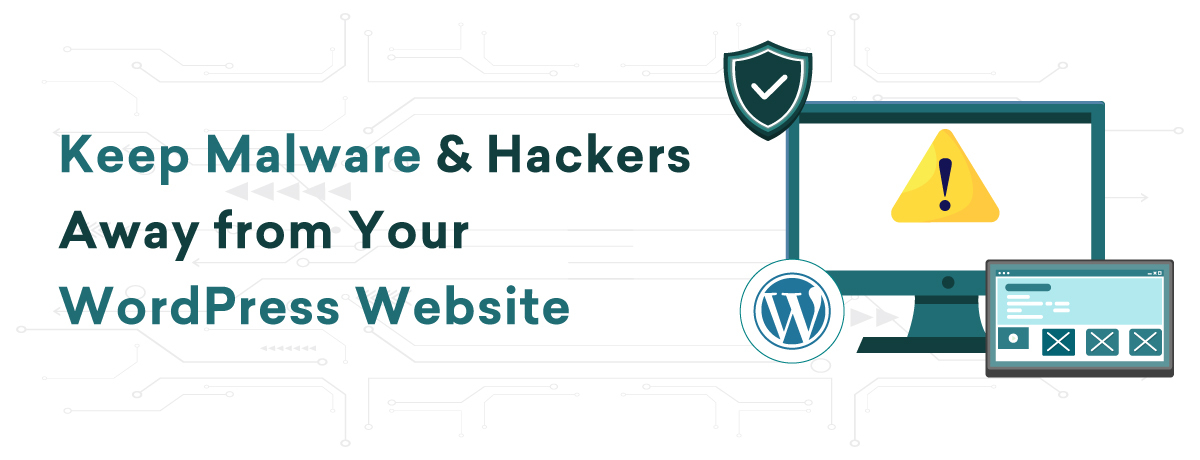WordPress runs over 40% of all websites worldwide, so it is a major target for hackers and malicious malware in today’s digital world. Keeping your WordPress Website secure is a continuous effort that calls for attentiveness and preventative steps. Here are some security precautions you may take to shield your WordPress website against viruses and hackers.
Keep WordPress and Plugins Updated
Updating the WordPress core, themes, and plugins is one of the easiest yet most effective ways to secure your WordPress website. Updates are frequently released by developers to address bugs and security flaws. Should you neglect to apply these updates, your website becomes vulnerable to possible attacks. You can allow WordPress core and plugin automatic updates to make this easier. To prevent problems with your site, make sure it’s compatible before making any significant adjustments.
Use Strong Passwords and Two-Factor Authentication
The first layer of protection against unwanted access is a password. Make that all of the user accounts on WordPress, including the admin account, have strong, distinctive passwords. A strong password should have a mix of characters, digits, and symbols. Enabling two-factor authentication (2FA) further enhances security by requiring a second form of verification in addition to the password, such as a number delivered to your phone.
Limit Login Attempts
Brute force attacks, in which hackers attempt several login and password combinations, are frequently used to access WordPress websites. One way to assist prevent brute force assaults is to limit the number of login attempts that a user is allowed to make. To impose this limitation, use plugins such as “WP Limit Login Attempts” or “Limit Login Attempts Reloaded”.
Secure Your Login Page
WordPress users can access the login page by going to yoursite.com/wp-admin or yoursite.com/wp-login.php by default. These URLs are regularly the target of hackers. Hide your login page from automated attacks by changing the login URL to something unique. For further protection against automated assaults and bots, you can incorporate a CAPTCHA into your login page.
Install a Security Plugin
Your WordPress website can be completely protected by installing a reliable security plugin. The capabilities of plugins like “Wordfence Security,” “iThemes Security,” and “Sucuri Security” include firewall protection, malware detection, and real-time site monitoring for unusual activities. These tools can notify you about possible security risks and offer suggestions on how to make your website more secure.
Use HTTPS and SSL Certificates
Data sent between your website’s visitors and SSL (Secure Sockets Layer) certificates is encrypted, making it more difficult for hackers to intercept. Because HTTPS websites are given preference by Google, SSL certificates are crucial for both SEO and security. You can quickly install free SSL certificates on your WordPress website from the majority of hosting companies.
Regular Backups
Since there is no 100% secure solution, having a solid backup plan is essential. Having regular backups guarantees that you can promptly restore your site to a previous state without losing important data in the event that it is compromised. You may schedule automatic backups and save them in safe places like cloud storage with a number of plugins, including “UpdraftPlus” and “BackupBuddy”.
Monitor and Audit Your Site Regularly
By keeping an eye out for strange activity on your website, you can identify any risks early on and take appropriate action to stop them before they cause serious harm. While security plugins might aid in real-time monitoring, it’s equally crucial to manually audit the files, user accounts, and permissions on your website.
Choose a Secure Hosting Provider
Your choice of hosting company has a big impact on how secure your WordPress website is. Choose a supplier that offers strong security measures like firewalls at the server level, automatic upgrades, and virus scanning. WordPress security is their area of expertise and managed WordPress hosting company like ByteNAP can give an extra degree of defence.
Conclusion
Adopting a multifaceted strategy is necessary to safeguard your WordPress website against viruses and hackers. You may greatly lower the chance of your website being hacked by adopting preventative steps including updating your site, using strong passwords, restricting the number of login attempts, and employing security plugins. Recall that maintaining website security calls for constant attention to detail and action.








